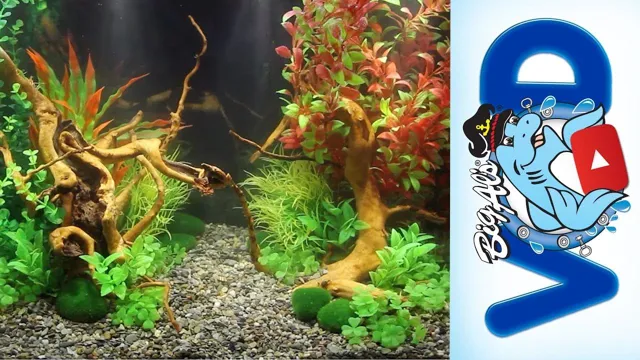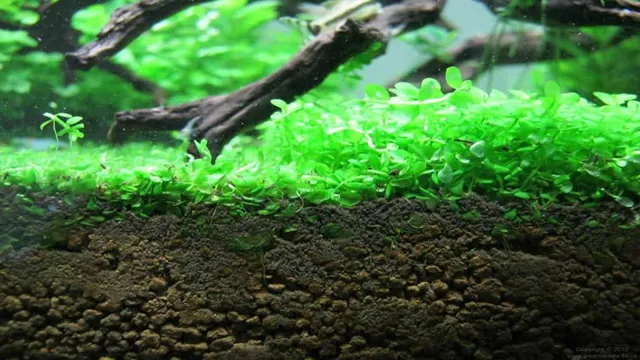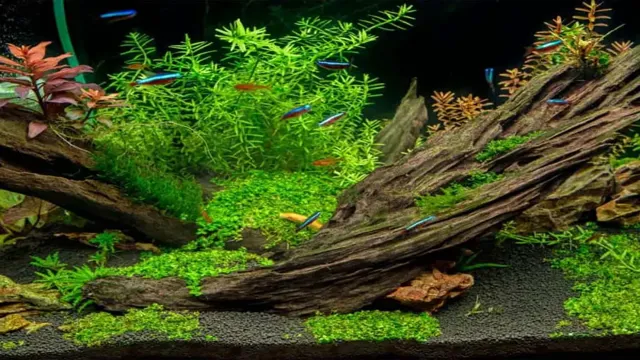How to Design an Aquarium Overflow: Expert Tips and Tricks
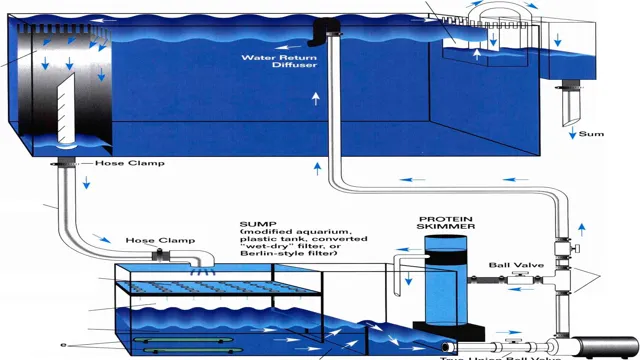
Are you ready to create the ultimate aquatic oasis in your home? If so, designing an aquarium overflow is a crucial step in the process. An aquarium overflow is a necessary component that ensures the water level in your tank stays consistent and prevents overflow. This may seem like a small detail, but it is essential in maintaining the health and well-being of your aquatic pets.
Designing an aquarium overflow sounds like a daunting task, but with a little bit of knowledge and guidance, you can complete it with ease. There are several different types of overflows to choose from, each with its own benefits and drawbacks. Factors such as your tank size, filtration system, and the type of aquatic life you plan to keep all play a role in determining which overflow is best for your setup.
In this blog post, we’ll explore the different types of aquarium overflows and provide tips for designing and installing one in your tank. With our help, you’ll be able to create an aquarium that not only looks beautiful but is also functional and healthy for your aquatic pets. So, let’s dive in!
Understanding the Need for an Overflow
Designing an aquarium overflow is crucial for maintaining a healthy aquatic environment. An overflow system helps to regulate the water in your fish tank, keeping it clean and safe. Without an overflow, your tank can quickly become overcrowded and polluted, leading to disease and even death for your fish.
By allowing water to flow out of the tank and into a filtration system, an overflow helps to remove toxins and debris from the water, ensuring that your fish are living in a healthy and sustainable environment. When designing your aquarium overflow, it’s essential to consider factors such as the size and shape of your tank, the types of fish and plants you have, and your filtration system’s capacity. Remember, a well-designed overflow system is essential for keeping your aquatic animals healthy and happy.
Ensuring Proper Water Flow
Proper water flow is essential in any aquatic setting, whether it’s a fish tank or a pond. However, it’s not just about having a constant stream of water; it’s also about ensuring that there’s an overflow present. This may seem counterintuitive, but it’s essential in preventing potential problems.
Without an overflow, the water can overflow the walls or the sides of the container, causing flooding or even damage to the surrounding area. An overflow gives the water a place to go when it reaches its maximum level, preventing any unnecessary accidents. Think of it as a safety valve that releases pressure when it’s too high.
As such, it’s crucial to pay attention to the water’s flow rate and ensure that the overflow is installed and functioning correctly. By doing so, you can maintain a healthy and beautiful aquatic environment without any unwanted surprises.
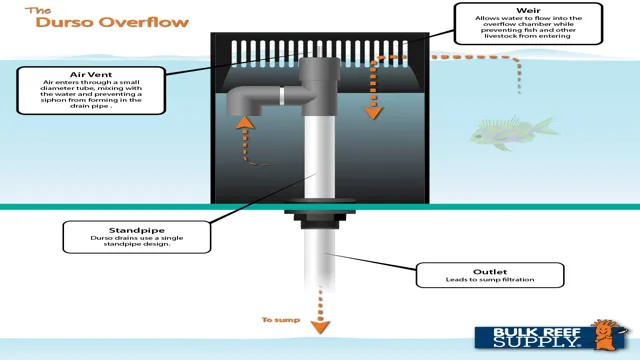
Sizing the Overflow Correctly
When it comes to setting up an aquarium, one essential aspect that often gets overlooked is the overflow. Many novice aquarium owners might wonder what purpose it serves and why it is necessary. Well, let me tell you that the overflow plays a crucial role in maintaining the health of your aquatic pets.
It prevents the water from overflowing out of the tank, ensures that the water level stays consistent, and facilitates efficient filtration. However, it is equally vital to size the overflow correctly. A small overflow can cause the water to spill over during irregularities, while a large overflow can disturb the water flow and make it noisy.
Hence, you must calculate the overflow rate based on the size of your aquarium and the filtration system. By doing so, you can ensure a smooth and uninterrupted flow of water, maintaining an optimal environment for your marine buddies. So, make sure you give the overflow the attention it deserves and keep your aquarium healthy and thriving!
Types of Aquarium Overflows
When designing an aquarium overflow, there are three main types to consider: siphon, overflow box, and drilled overflow. Siphon overflows are a basic design, using the principle of a siphon to pull water out of the tank and into a secondary chamber. While economical, they can be prone to clogging and failure if not maintained properly.
Overflow boxes are a popular choice for reef tanks, as they sit outside the tank and use a siphon to pull water into a chamber for filtration. They can be noisy, however, and may require adjustments to maintain proper water levels. Drilled overflows are the most efficient option, allowing for precise control of water flow and minimal noise.
However, they require drilling a hole in the tank and can be expensive to install. Consider your needs and experience when choosing the right type of overflow for your aquarium.
Internal Overflow Boxes
Aquarium overflows are an essential part of any aquarium system, ensuring that excess water is drained out and preventing potential flooding. One type of overflow is the internal overflow box, which is installed inside the aquarium and is great for reef tanks. They come in different designs, such as the hang-on back overflow and the internal corner box overflow.
The hang-on back overflow is mounted onto the back of the aquarium and utilizes the siphon method to drain water out and into the sump. The internal corner box overflow, on the other hand, is installed in the back corner of the aquarium and uses the Durso standpipe to regulate water flow. Both types of internal overflow boxes are great for reef tanks as they are not visible from outside the aquarium, creating a more aesthetic appeal to the overall look of the aquarium.
Plus, with its excellent design and reliability, it ensures that water transfer between the sump and aquarium is smooth and prevents any fish or other aquatic animals from getting stuck in the overflow. Overall, internal overflow boxes are a great option for a reef tank, providing a great space-saving option and a more aesthetic appeal to the aquarium.
External Hang-on-Back Overflows
External hang-on-back overflows are an essential part of keeping an aquarium system clean and healthy. These overflows function by moving water up and out of the aquarium, typically through a box or tube that hangs onto the back of the tank. There are different types of aquarium overflows and the external hang-on-back type is one of the most popular options.
It is ideal for those who do not want to drill their aquariums because the overflow does not need to be installed permanently. This type of overflow is versatile enough to fit in most tanks of different sizes, and its compact design makes it easy to maintain and clean. Additionally, it is a reliable tool to prevent water from overflowing, avoiding damage, and maintaining the water’s optimal levels.
Having an external hang-on-back overflow can save you time, money, and effort in keeping your aquarium in top condition.
Drilled Overflows
Aquarium overflow systems are essential for maintaining a healthy aquatic ecosystem. Drilled overflows are one type of aquarium overflow system that can be useful in larger tanks. They work by creating a hole in the tank’s back or side, which connects to a pipe that leads to a sump or filtration system below the tank.
These overflows can handle a higher amount of water flow as compared to hang-on-back or internal overflow systems, making them ideal for larger aquariums with heavy fish loads. However, the installation process can be tricky, and it’s crucial to ensure that the hole is drilled correctly and does not cause any structural damage to the tank. Drilled overflows can also be noisy, and additional measures like using a siphon break or adding a durso standpipe can be taken to reduce noise levels.
Overall, if installed correctly, a drilled overflow can be a reliable and effective option for keeping your aquarium clean and healthy.
Building Your Own Aquarium Overflow
If you’re an aquarium enthusiast, you might be interested in building your own aquarium overflow. Doing so will allow you to customize the overflow to fit your tank’s specific needs and can save you a considerable amount of money in the long run. To design an aquarium overflow, start by determining the maximum flow rate that your tank can handle.
You’ll then need to select an overflow that can handle that flow rate and position it correctly within your tank. Make sure to take into account the distance between the waterline and the overflow box when placing it. Additionally, you should consider the type of plumbing you’ll use, such as PVC pipes, and the type of sump you’ll need to handle the overflowed water.
With a little planning and research, you can easily design an aquarium overflow that will work efficiently and effectively for your tank.
Gathering the Necessary Materials
So, you want to build your aquarium overflow, and the first step is to gather the necessary materials. First, you will need a glass drill bit to drill holes in your tank. You should also get PVC piping, a bulkhead fitting, a sump, and a return pump.
The PVC piping will be used to create the overflow box, and the bulkhead fitting will be used to connect the overflow box to the sump. The sump will allow you to filter and clean the water, while the return pump will be used to pump the clean water back into the tank. It’s important to choose the appropriate size of piping and fittings to ensure that water flow is regulated properly.
It’s also essential to measure and plan the placement of each component before making any cuts or drilling any holes. By gathering all of the necessary materials and properly planning the placement, you’ll be well on your way to building your own aquarium overflow.
Creating a Functional Design
Creating a functional design for your aquarium overflow can be an exciting and challenging task. If you’re building your own overflow, you will want to ensure that it meets your specific needs and requirements, including the size of your tank, the flow rate of your pump, and the types of fish and other aquatic life you plan to keep. To create an effective overflow, you’ll need to consider several important factors, including the design of the overflow box, the type and size of the bulkhead fittings, the location and placement of the overflow, and the piping and plumbing that connects the overflow to your sump.
With careful planning and attention to detail, you can create a reliable and functional aquarium overflow that provides optimal filtration and water circulation for your aquatic pets. Whether you’re a seasoned aquarist or a beginner, building your own overflow can be a satisfying and rewarding experience that adds a personal touch to your aquarium setup.
Installation and Maintenance Tips
Designing an aquarium overflow may seem like a daunting task, but with the right knowledge and tools, it can actually be quite simple. The first step is to determine the size and flow rate of your aquarium, as this will dictate the size of your overflow and the amount of water it can handle. When choosing your overflow box, it is important to consider the placement and accessibility of your equipment for maintenance purposes.
You will also want to consider the type of plumbing you will use, such as PVC pipes or flexible tubing, and ensure that all connections are secure and leak-free. Proper maintenance is crucial for the longevity of your aquarium overflow, so it is important to regularly clean and inspect all components, replace any damaged parts, and ensure that the overflow is free from debris. With these tips in mind, you can design and maintain an effective and reliable aquarium overflow to keep your aquatic pets happy and healthy.
Conclusion
In summary, designing an aquarium overflow is like creating a work of art. It requires a balance of function and aesthetic appeal. With careful consideration of flow rates, plumbing setups, and tank dimensions, you can craft a beautiful and efficient overflow that not only keeps your aquarium clean, but also complements its overall design.
So, let your creativity flow and make a splash with your self-designed aquarium overflow!
FAQs
What is an aquarium overflow?
An aquarium overflow is a system that allows water to flow out of the tank into the filter system.
What are the benefits of using an aquarium overflow?
Aquarium overflows can increase the filtration capacity of your aquarium, prevent overflowing and maintain a stable water level.
How do you design an aquarium overflow system?
Designing an overflow system involves calculating the overflow rate, choosing the proper size of plumbing, and installing the overflow box or weir.
Can an aquarium overflow be added to an existing aquarium?
Yes, an aquarium overflow can be added to an existing aquarium by drilling a hole in the aquarium glass, installing an overflow box or using a hang-on overflow.
What are the different types of aquarium overflows?
The different types of aquarium overflows include internal overflow boxes, external overflow boxes, hang-on overflows, and reef-ready aquariums.
What is the recommended overflow rate for an aquarium?
The recommended overflow rate for an aquarium is about 10 times the tank volume per hour.
How do you maintain an aquarium overflow system?
To maintain an aquarium overflow system, you should regularly clean the overflow box, check the plumbing for leaks, and adjust the water level to prevent overflowing.

